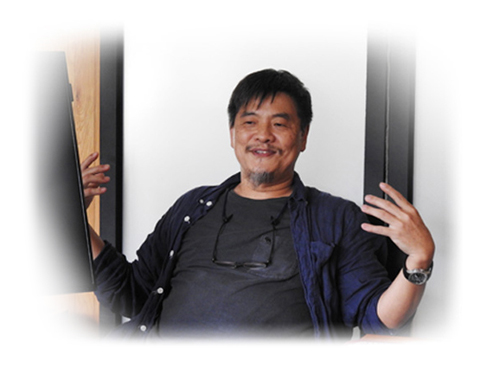
Exclusive Interview with Mr. Liu Chen-hsian
Q1: What brought you and Cloud Gate Dance Theatre together?
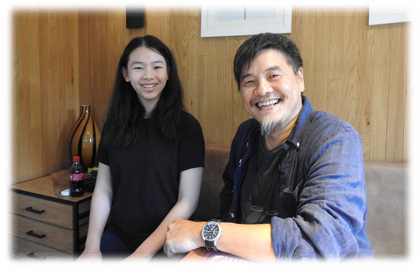 I got in touch with Cloud Gate Dance Theatre during their 15th anniversary. At that time, Mr. Lin Hwai-min just founded Department of Dance in the National Institute of the Arts. They had some foreign teachers and would like to get photographers to take photos for exhibitions and performances. They asked students to perform as if they were on stage. It was not just about handing in assignments and waiting for acceptance. Mr. Lin Hwai-min saw my works and asked me to shoot the rehearsals, the choreographing process, stage performances or promo materials.
I got in touch with Cloud Gate Dance Theatre during their 15th anniversary. At that time, Mr. Lin Hwai-min just founded Department of Dance in the National Institute of the Arts. They had some foreign teachers and would like to get photographers to take photos for exhibitions and performances. They asked students to perform as if they were on stage. It was not just about handing in assignments and waiting for acceptance. Mr. Lin Hwai-min saw my works and asked me to shoot the rehearsals, the choreographing process, stage performances or promo materials.
Q2: Do you try to understand their works before you shoot for Cloud Gate Dance Theatre?
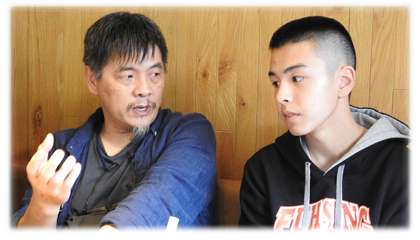 Mr. Lin Hwai-min has a lot of ideas for his new works. Formosa is expressed in words. Mr. Lin Hwai-min showed us the poems, written by many great poets in Taiwan. He gave us the excerpts for the whole production team, including costume designers, stage designers, musicians and photographers. This allowed us to understand why Mr. Lin Hwai-min created his works. My job is to translate these abstract ideas into images.
Mr. Lin Hwai-min has a lot of ideas for his new works. Formosa is expressed in words. Mr. Lin Hwai-min showed us the poems, written by many great poets in Taiwan. He gave us the excerpts for the whole production team, including costume designers, stage designers, musicians and photographers. This allowed us to understand why Mr. Lin Hwai-min created his works. My job is to translate these abstract ideas into images.
Q3: How do you capture the moment from dancers' movements?
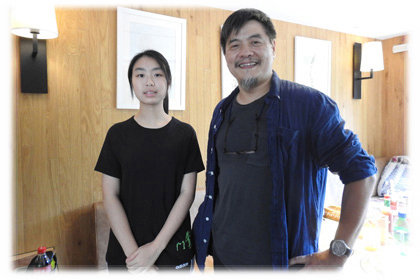 There is a lot to capture but not all the images would work. I observe the change of the dance such as different combinations of postures or body movements. Aesthetic intuition is as important as technicality in deciding when to press the shutter. It is necessary to tell who is in the spotlight, in the process of photo shooting and selection. It is a judgement call, but the endgame is to reflect the spirit of the dance. You need to understand your target in order to take good photos. It is a process of constant attempts and improvements.
There is a lot to capture but not all the images would work. I observe the change of the dance such as different combinations of postures or body movements. Aesthetic intuition is as important as technicality in deciding when to press the shutter. It is necessary to tell who is in the spotlight, in the process of photo shooting and selection. It is a judgement call, but the endgame is to reflect the spirit of the dance. You need to understand your target in order to take good photos. It is a process of constant attempts and improvements.
Q4: You have been the Cloud Gate photographer for many years and may have taken photos for the same dance. How do you find new surprises each time?
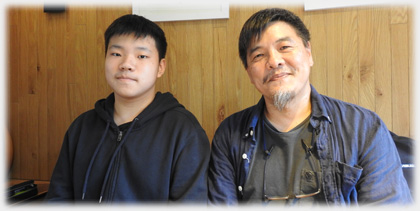 If you observe a dance from different angles, you will find that it changes a lot. Every time I take pictures, I find new things. I first look at the dance from the choreographer's perspectives and then switch to my perspectives. I record not only the motions of dancers but also the change of the stage and the set. Shooting for the same work is in fact a constant discovery of different visuals and feelings.
If you observe a dance from different angles, you will find that it changes a lot. Every time I take pictures, I find new things. I first look at the dance from the choreographer's perspectives and then switch to my perspectives. I record not only the motions of dancers but also the change of the stage and the set. Shooting for the same work is in fact a constant discovery of different visuals and feelings.
Q5: You are best known for your photos of people and the society. Is this simply your personal preference? Or, do you want to convey certain messages?
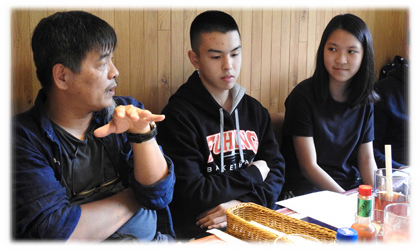 Many of the works I published are about people and the social reality. This is because I started photography as a job. I began taking still photos from movie images and then worked for media companies. I spent seven years taking news photos on the street. I only focused on theatre after I left the newspaper and ran my own studio. I am fascinated with the change of people. The change in people comes in a wide variety. This is my favourite topic. So, I have taken many photos about people.
Many of the works I published are about people and the social reality. This is because I started photography as a job. I began taking still photos from movie images and then worked for media companies. I spent seven years taking news photos on the street. I only focused on theatre after I left the newspaper and ran my own studio. I am fascinated with the change of people. The change in people comes in a wide variety. This is my favourite topic. So, I have taken many photos about people.
Q6: How did you select the photos for the exhibition "Cloud Gate"?
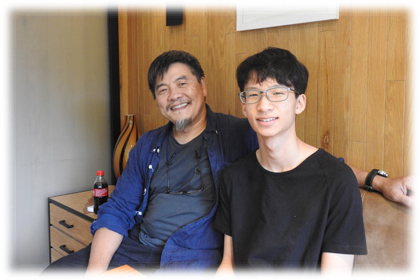 "Cloud Gate" was an exhibition upon the invitation from the Taichung City Government, who has been sponsoring Cloud Gate Dance Theatre for 10 years. In addition to some classic works, they hoped to emphasize the performances for which the entire theatres were sponsored. This was to bring back the memories of visitors. Some of the photos chosen were about these sponsored events during the past decade. It would be different if the photos were selected for a collection. Each collection has its own style and the pictures are chosen to meet specific purposes.
"Cloud Gate" was an exhibition upon the invitation from the Taichung City Government, who has been sponsoring Cloud Gate Dance Theatre for 10 years. In addition to some classic works, they hoped to emphasize the performances for which the entire theatres were sponsored. This was to bring back the memories of visitors. Some of the photos chosen were about these sponsored events during the past decade. It would be different if the photos were selected for a collection. Each collection has its own style and the pictures are chosen to meet specific purposes.
Q7: You mentioned that the poster for each performance should be completed one year in advance. How would you describe your chemistry with Mr. Lin Hwai-min? How would you capture the images Mr. Lin Hwai-min has in his mind?
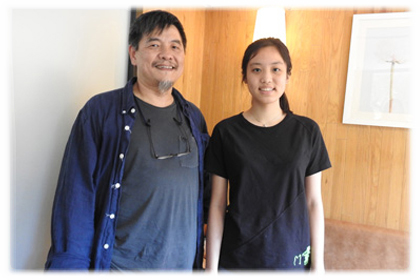 Most of the posters are produced during the preparatory stage. Many people would pre-book Mr. Lin Hwai-min's works even before the dances have been created. That said, it would be ridiculous not to have a picture for promotional campaigns. Mr. Lin Hwai-min would think about an image and let me take the shot. In the case of Formosa, Mr. Lin Hwai-min's original idea was to let dancers do rolls and somersaults in turn. However, I did not think it was strong enough. Instead, I asked all the dancers to roll and flip at the same time. I felt that this was the poster. I have worked with Mr. Lin Hwai-min for over 30 years because I could give him my feedback. I explain things to him so that he can make informed decisions.
Most of the posters are produced during the preparatory stage. Many people would pre-book Mr. Lin Hwai-min's works even before the dances have been created. That said, it would be ridiculous not to have a picture for promotional campaigns. Mr. Lin Hwai-min would think about an image and let me take the shot. In the case of Formosa, Mr. Lin Hwai-min's original idea was to let dancers do rolls and somersaults in turn. However, I did not think it was strong enough. Instead, I asked all the dancers to roll and flip at the same time. I felt that this was the poster. I have worked with Mr. Lin Hwai-min for over 30 years because I could give him my feedback. I explain things to him so that he can make informed decisions.
Q8: From a frontline photographer on the street to the photographer exclusive to Cloud Gate, what is the biggest change?
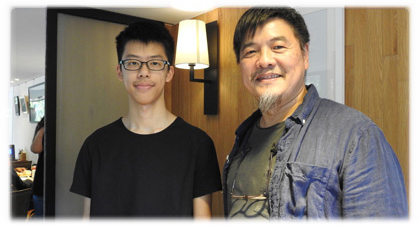 Taking pictures on the street are for news coverage. Many things are unexpected. You do not know what will happen for the next second. You need to find an angle. You will be at the front now but merge into the crowds the next. It is necessary to be quick and take a snap from the right spot. In the theater you can start over. There are strong images out there. I want to capture what I can anticipate and control.
Taking pictures on the street are for news coverage. Many things are unexpected. You do not know what will happen for the next second. You need to find an angle. You will be at the front now but merge into the crowds the next. It is necessary to be quick and take a snap from the right spot. In the theater you can start over. There are strong images out there. I want to capture what I can anticipate and control.
Q9: As the exclusive photographer to Cloud Gate Dance Theatre, what has moved you the most over the years?
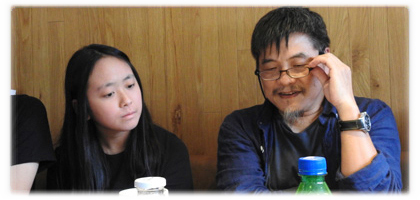 Each dancer dedicates their youth to Cloud Gate Dance Theatre. They express their devotion with their bodies. What has touched my heart the most was the dance Dream Maker. Mr. Lin Hwai-min invited three new mothers to dance together. Their slow, gentle and soft movements and interaction with their children backstage really brought me into tears.
Each dancer dedicates their youth to Cloud Gate Dance Theatre. They express their devotion with their bodies. What has touched my heart the most was the dance Dream Maker. Mr. Lin Hwai-min invited three new mothers to dance together. Their slow, gentle and soft movements and interaction with their children backstage really brought me into tears.
Q10: What has been the biggest challenge so far? How do you cope with it?
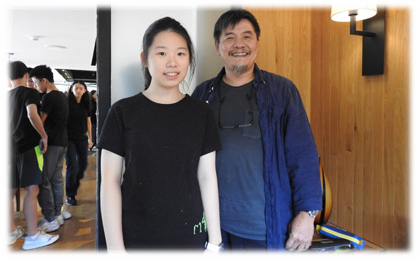 The biggest headache is technical issues. In the past when photos were taken on film, it would be a disaster if photos would not develop. This is less of a problem in the digital era. We can review the photos immediately. Preparations are very important. Equipment needs to be ready for the next day. For example, there is a lot of difference in the quality and effects between flashes and continuous lights. We add our own flashlights to achieve the desired results.
The biggest headache is technical issues. In the past when photos were taken on film, it would be a disaster if photos would not develop. This is less of a problem in the digital era. We can review the photos immediately. Preparations are very important. Equipment needs to be ready for the next day. For example, there is a lot of difference in the quality and effects between flashes and continuous lights. We add our own flashlights to achieve the desired results.
Image Source: Masters' Gathering
Conclusion
During the years working with Cloud Gate Dance Theatre, Mr. Liu Chen-hsian constantly brainstorm with choreographers for inspiration so that pictures are poignant, powerful and beautiful. The biggest challenge is to express the energy and tension of the dance. Dancers cannot see themselves on stage. It is necessary to make them understand that they are multifaceted. Photographers must know the dancers' body better than themselves in order to capture the most beautiful moment. Editing and post-production is required to present the perfect pictures.
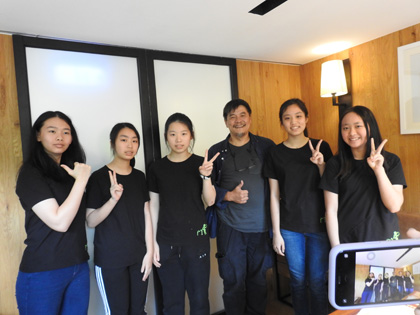
Image Source: Masters' Gathering
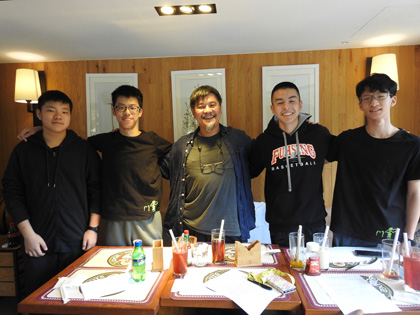
Image Source: Masters' Gathering
From documentary photography to creativity photos, Mr. Liu Chen-hsian has unique persistence, the making of beautiful pictures is not what he is after. The story is what matters. Software can enable many techniques, so it is not difficult to take nice photos. It is about feeling and observing, no matter what equipment is in use. Only with constant creativity can a photographer create his/her own style. Aesthetics is an absolute when it comes to the marriage between photography and art.
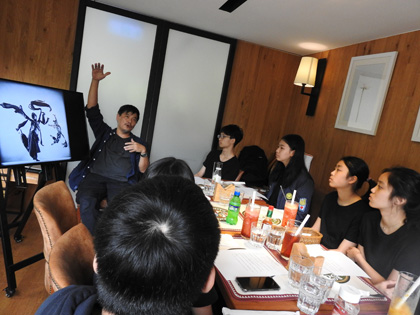
Image Source: Masters' Gathering
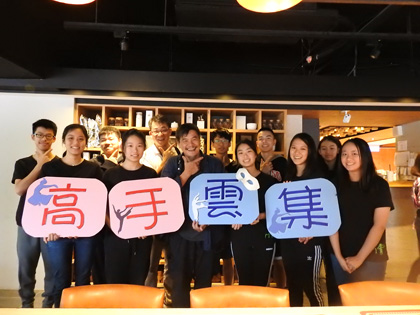
Image Source: Masters' Gathering

